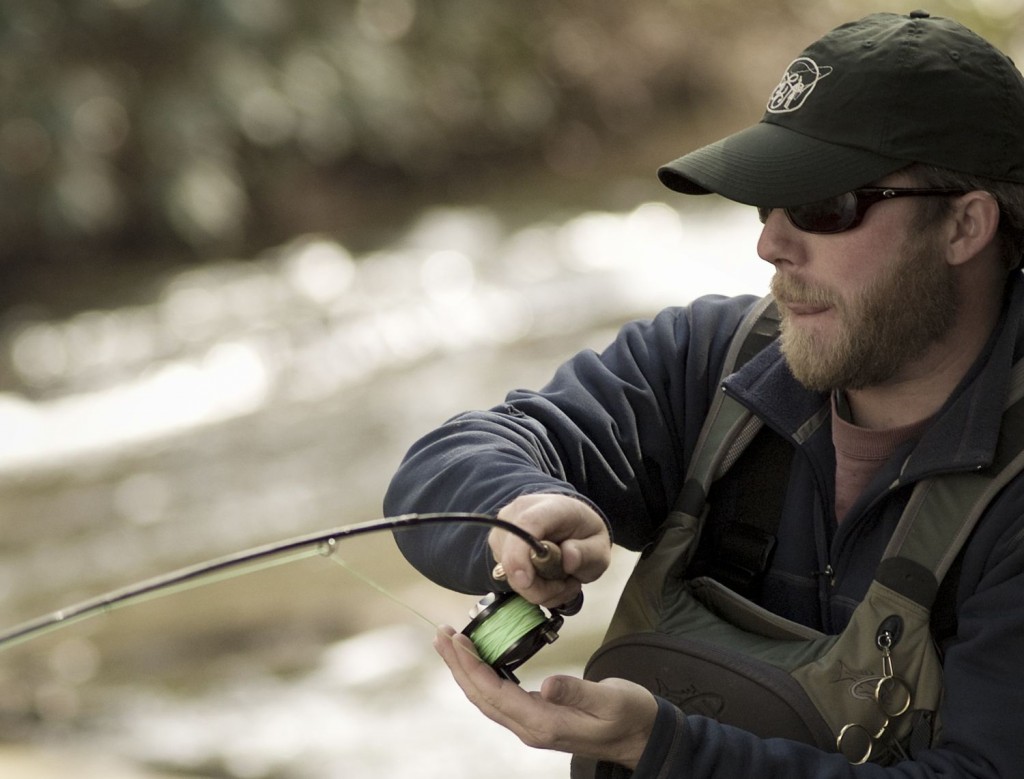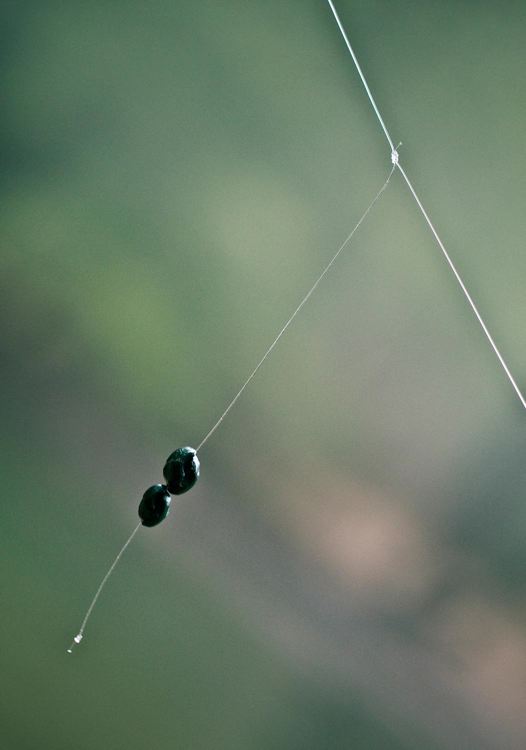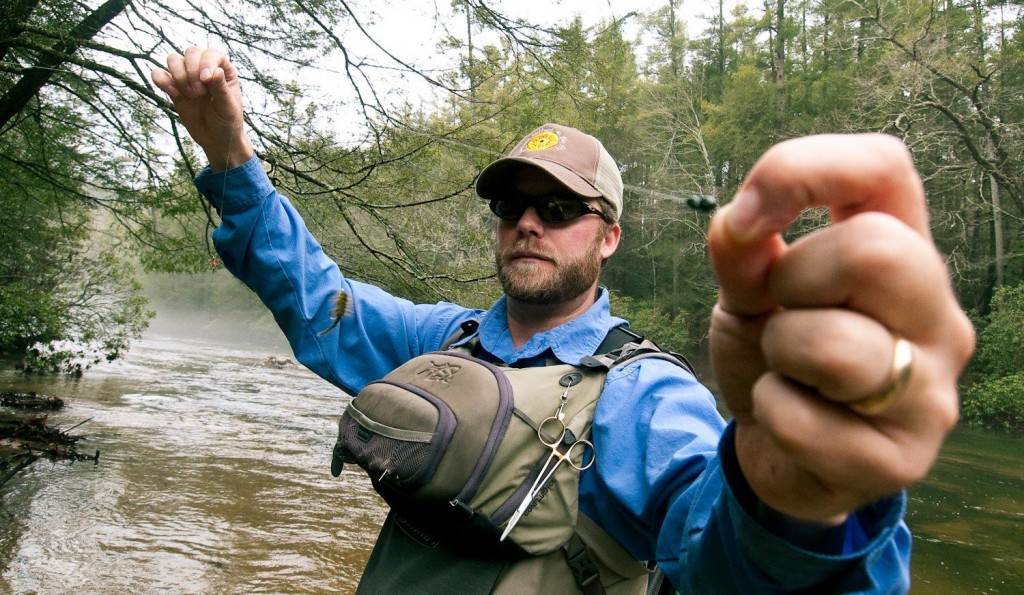You’ve been fishing hard all day long searching for that perfect honey hole.
You know the one I’m talking about, it’s the one that holds that trophy trout that keeps haunting you in your dreams. It’s getting late, your tired, and you know you should be heading back, but there’s a bend just up ahead, and your curiosity keeps pushes you forward with those powerful words, “This could be it, just see what’s on the other side”. Sure enough, as you round the corner you lay your eyes on a picture perfect run, offering everything a trophy trout could desire. You get into position, make the cast, mend your line, and begin following your strike indicator with your rod tip, when out of now where, it shoots under the surface like it was just attached to a iron dumb bell. You set the hook and feel the heavy weight of the fish thrashing its big head, and you’re immediately on cloud 9. The adrenaline rush doesn’t last long though. It’s quickly replaced by painful heart ache when you feel your tippet snap, and watch your rod go straight. The excitement is all over…, you won’t land that trophy fish or even be graced with a quick glimpse of it for that matter. The only memory you’ll have to remember that trophy trout by is the few aggressive head shakes. You bring your fly-less rig to hand and find the tippet broke at the split-shot.
Has this ever happened to you before?
If you attach your split shot too tight on your tippet it can weaken its strength significantly. Most anglers try to avoid this by tying a triple surgeon’s or blood knot above their tandem nymph rig, and attach the split-shot above that. The knot keeps the split-shot from sliding down to the flies during fly casting, and it only has to be snugly secured, which limits the chances of it damaging the tippet. It’s not 100% full proof, but it’s the most popular method used by experienced nymph fisherman. To limit the break offs during fierce fights, anglers should get in the habit of regularly checking their nymph rig for weak spots and abrasions throughout their day of fishing, particularly after each catch.
Attaching Your Split-Shot on Tags
An alternative method that eliminates the possibility of split-shot weakening your tippet is to attach it to the tag of your knot above your lead fly. Instead of trimming off both tags from the knot, leave one three inch tag, tie a quick overhand knot, and attach your split-shot. Tie on your lead fly and dropper off the bend of the hook just like you do in a standard two-fly system. This works really well and it doesn’t add any time rigging if you want to change out fly patterns.
Attaching Split-Shot At the Bottom of Your Nymph Rig
A second option is attaching each nymph with a sliding dropper loop, and having your split-shot positioned at the very bottom of your nymph rig. To fish this method, first tie on a piece of tippet onto your leader 18-24″ long, with a standard triple surgeon’s or blood knot. Then tie a simple overhand knot at the end of your tippet and attach your split-shot. Next take two separate pieces of tippet 12″ long and tie a perfection loop at one end for each. Take one of them and secure it above your first knot (surgeon or blood knot) running the tag through the perfection loop just like you do when your putting on a fresh leader. Then take the second piece of tippet with the perfection loop and attach it above your split-shot. Finish off each sliding dropper loop by tying on a nymph. Anglers that fish this rig generally have their first sliding dropper and nymph around 6″ long. The second sliding dropper loop above the split-shot can be as much as 12″ in length.
I really like this rig over fishing a standard czech nymphing rig. It’s basically the same thing but instead of using a heavy point fly to get your flies down, you instead substitute split-shot. I like this because it gives you more versatility in applying weight. Moreover, the sliding dropper loops allow you to change out flies once or twice without having to completely rebuild the rig, which is a big negative with standard czech nymphing rigs. When your sliding dropper loops get too short to change out flies you can quickly detach them and add a new one.
Warning: This rig is suited best for roll casting or short casting with wide loops. It tangles easier than the other rigs mentioned, and it isn’t recommended for novice nymph fisherman.
I wrote this post because it’s so easy for all of us to get set in our ways, fishing only certain rigs, because that’s what we’re most comfortable with. The fact is, sometimes there’s situations where alternative rigs will out perform your goto rig. Furthermore, no one ever truly stops learning in the sport of fly fishing. Don’t limit the growth of your skills by being unwilling to try new things. You never know, those new techniques may end up turning that unproductive day of fishing into a productive one.
Keep it Reel,
Kent Klewein Gink & Gasoline www.ginkandgasoline.com hookups@ginkandgasoline.com Sign Up For Our Weekly Newsletter!



ONE of the early set-up rigs we learn in Michigan for salmon and steelhead drifting. Some would use this arrangement on amnesia and we refer to it as ‘Chuck-N-Duck’. We then learn that specialty fly lines will get your egg/nymph offering in the zone as close as the C-n-D method…
Tight Lines,
Koz
Yup, and they are a whole lote more fun to cast than an ounce of pencil lead.
I grew up fishing the lower manistee, the grand, and just about every wet spot in between that held steel.
I live in MN now, I miss the clear waters of Michigan.
I say check out Skip’s Originals…i am a convert to Toobies shot…adjustable, easy to rig and take off, slide over knots, don’t damage the line, easier to cast than split shot, and they often serve as an attractor in some fishing situations. Long story short, i have about ten containers of traditional shot that i will never use again.
a.
p.s. i am not affiliated or otherwise related to Skip’s Originals…i pay full price and do so gladly
great article. We use the “drop shot” or “pogo” rig on the Beaverhead almost exclusively. It consistently out fishes a standard in line weighted nymph rig 3 to 1!
Pingback: First Casts 02.04.15 | Orvis News
I took a guided trip on Section A of the Green River about 7 years back. All the guides were rigging with that second option, with a boatload of splitshot on the bottom to get the rig down deep and then the flies rode about every 18″ up the water column on tags coming off the leader. Tough to get used to but effective!
I like to use the tag end trick, but instead of lead split shot, I’ll tie on an appropriately sized black tungsten bead.
Make sure to check your local regs as well. I am certainly no expert but it sounds to me like in CA you can’t hang weights below a hook:
“4. It is unlawful to use any weight directly attached
below a hook. “
…although, thinking more about it, it does say “directly,” so it sounds like if the flies above are on tags, the weights would not be directly below the hooks, so that would be legal…
So, never mind!
(I can’t seem to be able to delete my first comment)
With the second method, do you find that the separate tippet pieces slide around often? I assume the top one does not as it is close to the knot, but worried about having to adjust the bottom one often… Also, are most people using smaller tippet for the 2 separate tippet pieces vs. the main tippet with the split shot on it?
*light bulb* It’s kind of funny…..you just described Czech/Polish nymphing. Just tie a heavier fly to the “tag” instead of the split shot. You are essentially doing the exact same thing.
No nymphs, no indicators, no split shot. No headache!
The rig you are referring to with a weight on the bottom is commonly called the bounce rig. This is a great shallow water rig tied short and fished with a little amount of weight. I also like to fish the other rig, commonly referred to as the in-line rig. I try to make the tag end where I put the split shot, as short as possible otherwise it will start to twist the rig up and tangle easily.
Informative as always Kent. Nice job.
Louis, Thanks for great info on split shot. At least one Euronympher I know claims he can change flies about 8 times on a short dropper before he has to replace it. The trick is to use a un-improved clinch knot and to hold the tag end against the bead (probably harder with no bead) as you pull the knot tight – almost no waste.
I’ve always wondered how other fly guys remove split shot – turns out there are several options: 1) squeeze shot on side away from slot to make it open 2) use fingernails to pry slot open (some shot have divot at slot to make this easier 3) use specially-designed shot pliers that have a wedge that opens the shot (it actually works quite well). Thanks!
An idea to try along with these great tips: Tungsten beads in place of split shot. The higher density gets flies down fast with less bulk.